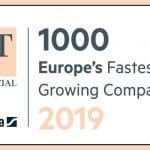How does lean supply chain management help businesses reduce waste and improve sustainability?

Summary
What does ‘Lean’ actually mean, and why should we care? Lean is a mindset focused on creating more value with fewer resources by simplifying processes and removing waste. It helps businesses become more efficient and sustainable. Waste in the supply chain often occurs in overstocked inventory, idle goods, and inefficient processes, leading to increased costs and environmental harm.
Can lean thinking reduce environmental impact? Yes, by eliminating waste and optimising resource use, lean supply chains lower emissions and shrink their environmental footprint. Who needs to be on board for lean supply chain management to work? Success depends on collaboration across suppliers, procurement teams, and internal departments, with a shared commitment to lean principles. Are businesses ready to measure what matters? Moving beyond volume metrics to focus on value, efficiency, and sustainability is key to long-term success.
Supply chains are often where the biggest inefficiencies, waste, and emissions hide quietly, undermining sustainability goals and business performance.
Over half of business leaders say their supply chains need serious improvement. So, what if the secret to a greener, more resilient business is not just bold climate pledges, but going lean?
Lean operations mean less waste, smarter decisions, and a supply chain that works for the planet and your bottom line.
What does ‘Lean’ actually mean, and why should we care?
When you hear the word lean, what comes to mind? For most people, not much. In a recent survey, 88% of respondents said they were unfamiliar with the concept. Only 9% had low knowledge, and just 3% claimed high understanding.
Even when the term is recognised, it is often mistaken for a code word for cost-cutting, reducing headcount, or slashing budgets.
But lean is not just about saving money. It is a mindset focused on creating more value with fewer resources. It encourages simplification, removes inefficiencies, and supports the design of smarter and cheaper systems.
This matters because the way many organisations operate today is not only resource-intensive but also unnecessarily complex. That complexity leads to wasted time, energy, materials, and emissions.
So here is the real question. Can we design systems that do more by doing less? Not by overworking people, but by making processes work better. Lean thinking challenges how things have always been done and opens the door to more sustainable and efficient ways of working.
Where does waste happen in a supply chain?
Waste in supply chains is more common than many businesses realise, and far more costly than expected.
Globally, around 8% of stock ends up as waste. This is often the result of expiry, damage, or overproduction. That translates to approximately 163 billion dollars in discarded inventory each year.
In a recent survey, organisations estimated that they lose 3.6% of their annual profits directly due to inefficiencies in their supply chains. In key industries such as automotive, beauty and personal care, apparel, food, and pharmaceuticals, the average level of waste remains at 8%.
These are not just statistics. They represent materials that were sourced, produced, stored, and transported, only to be discarded. They also highlight operational blind spots that often go unnoticed.
So, where does this waste occur?
It often hides in plain sight. In overstocked warehouses. In goods that sit idle. In fragmented processes and poorly timed deliveries.
Ask your team:
- Is your inventory helping you or holding you back?
- How much time do your goods spend sitting still, unused?
- Are your deliveries moving with purpose or just moving?
Understanding where waste exists is the first step toward reducing it. And in many cases, the most meaningful improvements begin with better visibility and leaner systems.
Can lean supply chain management thinking reduce environmental impact?
53% of businesses say that incorporating environmental practices into their supply chains is a priority. But good intentions alone are not enough. The real challenge lies in execution.
Lean thinking helps bridge this gap. It brings operational efficiency and environmental responsibility into alignment.
At its core, lean is about eliminating waste. Whether that waste comes from excess inventory, unnecessary movement, overproduction, or delays, it increases costs and contributes to emissions.
So what if every tonne of saved waste is also a tonne of saved carbon?
As supply chains become leaner, they use fewer raw materials, generate less waste, and require less energy for storage and transport. The result is a significantly smaller environmental footprint. This is not a future ideal, it is already happening.
Who needs to be on board for lean supply chain management to work?
New regulations are raising the bar for accountability. The European Union has passed legislation that requires companies with more than 1,000 employees and a net turnover of over €450 million to conduct audits of their supply chains. Transparency is no longer optional, it is becoming a legal expectation.
But meeting that expectation requires more than data. It requires people.
At present, only 40% of businesses are actively reskilling their workforce as part of their talent strategy. That leaves a significant gap because lean thinking cannot thrive in silos or surface-level strategies. It needs buy-in across the entire value chain.
Is your supply chain only as sustainable as your weakest partner? For lean to take hold, supplier collaboration must become a priority. Procurement functions play a crucial role in this. They are not just negotiating contracts, but shaping the performance and values of the supply chain itself. Working with partners who understand lean principles or are willing to learn is essential.
Internally, teams need support too. Lean is not a toolkit that one department applies in isolation. It is a shift in mindset that affects how decisions are made, how resources are allocated, and how success is measured.
That means investing in training, promoting cross-functional alignment, and making space for experimentation. It also means recognising that lean is not a one-off project or quick fix. It is a long-term cultural shift.
The businesses that succeed with lean are the ones that treat it as a journey, one that involves leadership, operations, procurement, and suppliers working together toward smarter, cleaner, more resilient systems.
Are businesses ready to measure what matters with lean supply chain management?
More than half of businesses, 57%, say that disruptions in the supply chain significantly impact their company’s revenue. This shows how vulnerable organisations remain despite advances in technology and planning.
It also raises an important question. Are current KPIs focusing on the right things?
Too often, businesses measure success by volume, how much product moves, how many deliveries are made, or how fast orders are processed. But volume alone does not capture the full picture. What about value? What about the quality, efficiency, and environmental impact of those processes?
Lean supply chains encourage a shift toward measuring what truly matters. This means tracking metrics that reflect resource use, waste reduction, and long-term sustainability alongside traditional performance indicators.
This approach aligns closely with Environmental, Social, and Governance (ESG) goals and lifecycle thinking. By understanding the full impact of products, from raw materials to disposal, companies can make better decisions that benefit both the bottom line and the planet.
Are businesses ready to embrace this more meaningful way of measuring success? Lean thinking suggests the answer lies in moving beyond volume to focus on value that lasts.
Drive real change for lean supply chain management with Kronos Group
Did you know that 79% of companies with high-performing supply chains achieve revenue growth above the industry average? Businesses with optimised supply chains also enjoy 15% lower supply chain costs, hold less than half the inventory, and experience cash-to-cash cycles that are three times faster.
At Kronos Group, our procurement consulting services help organisations unlock these benefits by transforming supply chains to be more efficient, agile, and sustainable.
If you are ready to reduce waste, improve performance, and drive real business growth, it starts with rethinking your supply chain through expert procurement consulting.
FAQs
Lean supply chain management encourages resilience through smart sourcing. 50% of companies are expected to adopt balanced multi-shoring, which spreads risk across regions and suppliers. This approach leads to a 10% point boost in supply reliability, a critical factor in reducing disruption and waste.
A lean supply chain is not just about efficiency, it is also about delivering a better experience. 70% of companies recognise their supply chain as key to excellent customer service. By cutting delays, streamlining operations, and responding faster to demand, lean methods directly support stronger customer satisfaction.
Without visibility, waste creeps in. Surprisingly, 43% of small businesses do not track their inventory, which leads to overstocking, spoilage, and lost sales. Lean supply chain management puts inventory control front and centre, helping businesses save costs, improve flow, and reduce unnecessary stock.



